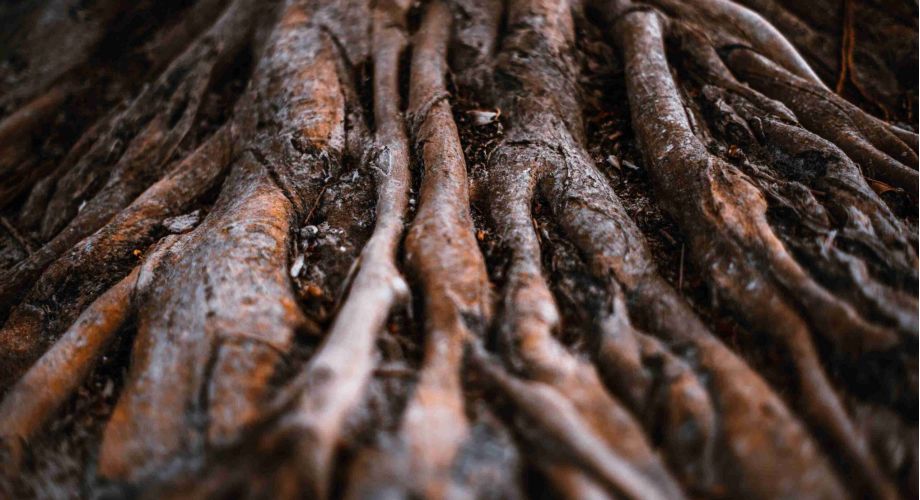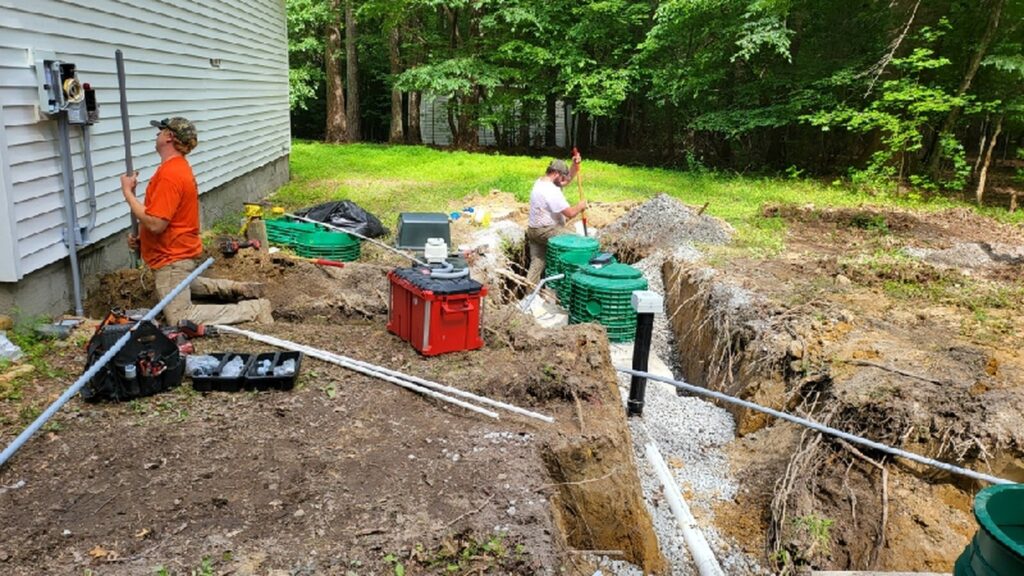
Roots In Septic System? (Here’s What To Do)
Tree roots and septic systems have a way of finding each other, and it’s rarely a happy reunion.
What starts as a few tiny roots sniffing out moisture can turn into a tangled underground mess that slows your drains, cracks your pipes, and leaves you with a big repair bill.
Unfortunately, all this usually happens quietly over time – until one day, you’ve got gurgling toilets or soggy patches in the yard and no idea why.
The good news is, this isn’t a lost cause.
In this post, we’ll show you how to handle roots in your septic system before it turns into a full replacement job.
Why Roots Are A Big Problem For Your Septic System
Tree roots are like moisture-seeking missiles. Pipes and tanks in your septic system hold water and nutrients, so they’re basically sending out an open invitation to nearby trees. Even the tiniest gap in a pipe joint or tank seam is enough for a root to slip in.
And once it’s inside, it doesn’t stop. It keeps growing, thickening, and spreading.
Inside the pipes, roots can trap waste, slow down flow, and eventually create full blockages. They can break apart fittings and even crack the pipe as they expand.
In tanks, roots can push through lids and seams, which can lead to leaks and structural issues.
If the problem keeps growing unchecked, you could end up with backups in the house, soggy ground around the drain field, or even total system failure.

Also Read: Coffee Grounds In Septic Tank
Step 1: Confirm The Problem
Before jumping into a solution, you need to be sure the roots are actually the problem.
Slow drains and backups can come from a lot of different issues.
A camera inspection is the easiest and most accurate way to know for sure. A plumber can feed a camera through the main line and spot exactly where roots are growing in.
This inspection also gives you a sense of how bad it is. Maybe it’s just a few fine roots near a joint, or maybe there’s a full-on root ball clogging the line.
Step 2: Clear The Roots
Once you’ve confirmed that roots are invading, the next move is to get them out.
There are two main ways people handle this: mechanical removal and foaming root killers. They’re often used together for the best results.
Let’s take a quick look at each of them:
Mechanical Removal
This is all about physically cutting and flushing the roots out of the pipes.
Plumbers use special augers or hydro-jetting equipment to slice through the roots and clear the blockage. Think of it like giving the pipes a deep cleaning.
Also Read: How Much Does A Septic Design Cost?
Augers work well for small to medium root problems, but hydro-jetting can blast through tougher growth and clean the pipe walls too. Once the roots are out, the line flows like new again.
A pro will likely run a camera down the pipes before and after to make sure all the roots are cleared out.
The only catch is that this doesn’t stop roots from growing back later.
It’s more of a “clear it out now” solution than a permanent fix.

Foaming Root Killers
Another option is using a chemical root killer that foams up inside the pipes.
Foaming root killers kill the existing roots inside the pipes and coat the walls to slow down future growth. The foam fills the entire pipe, reaching places tools can’t.
Most of these products are safe for septic systems and designed to break down naturally, so they don’t damage the tank or drain field.
The best part is that this method doesn’t require digging or disrupting your yard. However, it’s not a permanent fix. You’ll likely need to apply it again in the future.
If the roots are really bad, you might start with mechanical removal to clear the heavy stuff and then use the foam as a follow-up treatment.
Also Read: Is Kirkland Toilet Paper Septic Safe?
Step 4: Remove The Source
Just like any problem, dealing with the symptom doesn’t fix the root cause. (Pun intended!)
After you’ve cleared out the roots, you need to tackle the source of the problem. This means taking care of the trees or bushes that are causing the roots to invade your system.
If you can, remove the tree or bush that’s closest to your septic system. This will eliminate the root source and prevent future growth.
If removing the entire tree isn’t an option, try trimming the roots around your septic system as much as possible. You can also install a root barrier around the septic pipes, which is like a protective shield that prevents new roots from reaching the pipes.
That said, make sure you’re following local regulations when removing trees. You don’t want to end up in trouble for cutting down a tree that’s protected or in a restricted area.
Step 5: Keep Roots Out For Good
So, you’ve dealt with the roots, removed the source, and everything is looking good, right? Well, not quite yet. You want to make sure the roots don’t return and wreak havoc again.
Here are a few ways to keep your septic system safe from future root invasions:
- Keep large trees at least 20 – 30 feet away from your septic tank and drain field.
- Use root barriers when planting new trees near septic components.
- Schedule regular inspections every couple of years to catch early root growth before it turns into a major problem.
You can also use septic-safe foaming treatments periodically, especially if you have a lot of trees nearby. A little maintenance now is way better than a messy surprise later.
Bottom Line
Roots in your septic system are a big deal, but they don’t have to spell disaster.
Once you confirm the problem, clearing the roots and removing the source are your first priorities. After that, it’s all about keeping the roots out for good with regular maintenance and a little preventative care.
A bit of attention now saves you from a nasty backup and a huge bill down the line.
So if you notice those early warning signs, don’t wait – get it checked, clear the roots, and keep them out for good.



